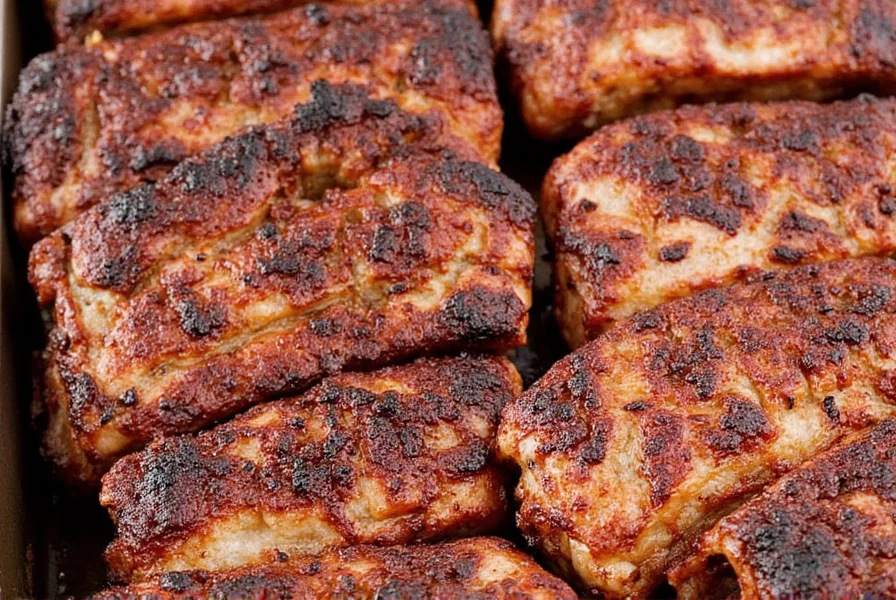When cooking ribs, the best liquids to spray include apple cider vinegar, apple juice, beer, cola, butter-water mix, white wine vinegar, and beef broth. Each provides unique benefits for moisture, flavor, and bark development. Here's how to use them effectively for perfect BBQ results every time.
Top 7 Liquids to Spray on Ribs
| Liquid | Flavor Profile | Key Benefits | Best For |
|---|---|---|---|
| Apple Cider Vinegar | Tangy, slightly sweet | Cleanses smoke residue, enhances spice penetration, promotes bark formation | Traditional Southern-style ribs, spice-heavy rubs |
| Apple Juice | Naturally sweet, fruity | Adds subtle sweetness, aids caramelization, balances acidity | Sweet-and-smoky ribs, baby back ribs |
| Beer (Lager) | Earthy, malty | Softens meat fibers, adds depth, complements bold rubs | Beer-marinated ribs, hearty spare ribs |
| Cola | Sugary, fizzy | Quick tenderizer, creates shiny glaze, enhances caramelization | Quick-cook ribs, last-hour spritzing |
| Butter & Water Mix | Rich, savory | Moisture retention, silky texture, prevents drying | Baby back ribs, post-wrapping application |
| White Wine Vinegar | Sharp, clean | Excellent deglazer, enhances bold spices, balances sweetness | Spicy rubs, Asian-inspired ribs |
| Beef Broth | Umami-rich | Adds savory depth, enhances meaty flavor, boosts moisture | Beef ribs, smoked brisket-style ribs |
Why Spritzing Matters for Perfect Ribs
Spritzing during smoking maintains moisture, develops proper bark, and enhances flavor absorption. Without it, ribs can dry out or develop uneven texture. The science behind spritzing includes:
- Moisture retention: Replenishes surface moisture lost during long cooks
- Bark formation: Creates the perfect crust by balancing moisture and smoke exposure
- Flavor layering: Allows smoke and spices to penetrate deeper into the meat
How to Use Spray Like a Pro
Timing and technique make all the difference. Follow these expert guidelines:
When to Spritz
- First hour: Every 30 minutes to establish moisture barrier
- Hours 2-4: Every 45-60 minutes to maintain even cooking
- Final hour: Stop 60-90 minutes before wrapping to allow bark to set
Pro Tips for Perfect Spritzing
- Use a stainless steel sprayer for durability and heat resistance
- Keep sprayer nozzle clean to prevent clogs from sugar-based liquids
- For maximum flavor penetration, mix vinegar and juice at 50/50 ratio
- Never spray when opening the smoker lid for more than 10 seconds
DIY Spray Recipes
- Southern Classic: ½ cup apple cider vinegar + ½ cup water
- Sweet & Smoky: ¾ cup apple juice + ¼ cup bourbon
- Pro Competition Blend: ⅓ cup apple cider vinegar + ⅓ cup beef broth + ⅓ cup apple juice
Spice & Liquid Storage Hacks
Proper storage ensures freshness and prevents waste:
Vinegars & Juices
- Store sealed in cool, dark places for up to 6 months
- Refrigerate after opening for maximum shelf life
Broths & Wines
- Freeze in ice cube trays for easy portioning
- Use within 3 days when refrigerated
Buying Guide: Best Spritz Bottles & Tools
1. Weber Premium Mist Sprayer
- Features: 16 oz stainless steel, adjustable fine mist, leak-proof seal
- Best For: Competition cooks and frequent smokers
2. Lodge Cast Iron Spiced-Up Spritzer
- Features: Heat-resistant glass, silicone grip sleeve
- Best For: Home cooks wanting stylish, durable equipment
Frequently Asked Questions
Can I spray ribs too much?
Yes. Over-spritzing cools the smoker and prevents proper bark formation. Limit spritzing to every 30-60 minutes based on cooking stage.
What's the best time to stop spritzing before finishing?
Stop 1-2 hours before wrapping or glazing to allow the bark to set properly without becoming soggy.
Is water a good substitute for spritzing?
Water maintains moisture but lacks flavor. Use only when no other liquids are available. For best results, always use flavored sprays.
Do I need to spray baby back ribs differently than spare ribs?
Baby backs are leaner and benefit from more frequent light spritzing (every 30 minutes). Spare ribs handle less frequent but heavier applications (every 45-60 minutes).
Can I reuse leftover spritz mix?
Yes, if refrigerated within 2 hours of mixing. Use within 3 days for safety and flavor quality.
What's the best liquid to spray on ribs for maximum flavor?
The gold standard is a 50/50 mix of apple cider vinegar and apple juice. The vinegar cuts through fat and enhances smoke absorption, while the juice adds subtle sweetness and promotes caramelization. For beef ribs, add 20% beef broth to the mix for extra umami depth.
Can I combine different spritz liquids for better results?
Absolutely. Many competition pitmasters use custom blends like 40% apple juice, 40% apple cider vinegar, and 20% beef broth. For sophisticated profiles, add a splash of bourbon or whiskey. Avoid sugar-heavy mixes to prevent burning during smoking.
Conclusion
Mastering what to spray ribs with transforms ordinary BBQ into exceptional results. Whether using classic apple cider vinegar blends or experimenting with beef broth combinations, the right spray technique ensures moist, flavorful ribs with perfect bark. Invest in quality sprayers, store ingredients properly, and follow timing guidelines for consistently outstanding barbecue.











 浙公网安备
33010002000092号
浙公网安备
33010002000092号 浙B2-20120091-4
浙B2-20120091-4